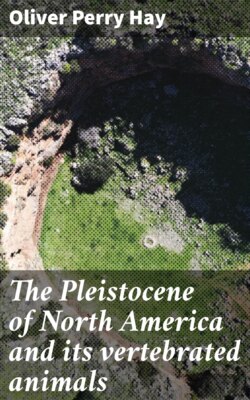Читать книгу The Pleistocene of North America and its vertebrated animals - Oliver Perry Hay - Страница 30
На сайте Литреса книга снята с продажи.
ONTARIO.
ОглавлениеTable of Contents
6. Ottawa.—Remains believed to belong to Phoca grœnlandica have been found near Ottawa, Ontario. In 1856 (Proc. Phila. Acad. Nat. Sci., vol. VIII, p. 90, plate III), Doctor Leidy described and figured the hinder limbs of a young aquatic animal which he regarded as a seal, but did not more exactly identify. He expressed the opinion that its descendants were yet sporting in the sea-borders of Canada. This specimen was found in Gloucester Township, Carleton County, about 9 miles east of Ottawa. The locality is on Green’s Creek, a tributary of the Ottawa River, the bank of the creek being about 30 feet high and composed of clay. This is regarded as being of Champlain age, the close of the Wisconsin stage. Out of this clay were washed numerous nodules of hardened clay, many of which contained organic remains, such as marine shells and fishes. Among the latter are two species, the capelin (Mallotus villosus) and the lump-sucker (Cyclopterus lumpus).
Later, at the same locality, a lower jawbone of a young seal was found, which was identified as the harp seal; and it was even thought that it might have belonged with the hinder limbs figured by Leidy. A figure of this jaw, with some of the teeth, was published by Dawson in his “Canadian Ice Age.”
